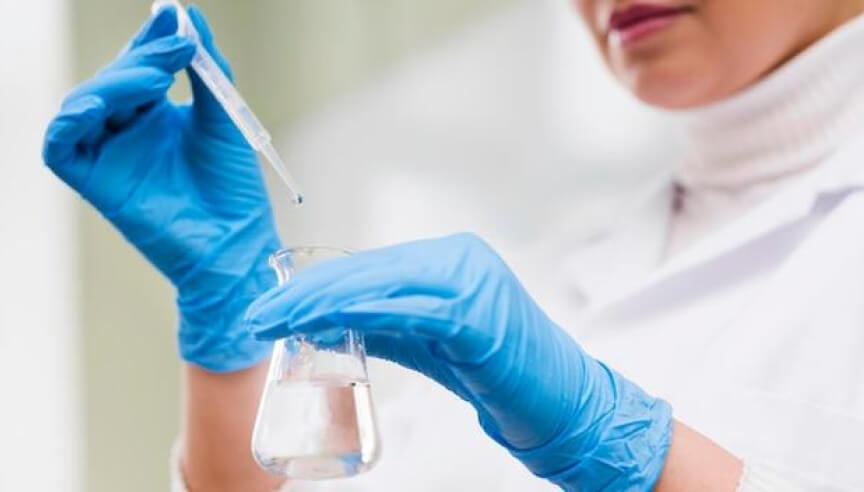Recent Posts
Laboratory Water: Purification Methods

From basic rinsing to intricate biochemical assays, the quality of water used can profoundly influence the outcome of experiments. This article delves into the applications and analyses of laboratory water, the contaminants it may harbor, and the methods employed for its purification.
Understanding Laboratory Water: Applications, Contaminants, and Purification Methods
In the realm of scientific research and experimentation, water serves as an indispensable solvent, reagent, and medium for numerous laboratory processes. However, not all water is created equal, and the purity of laboratory water plays a pivotal role in ensuring the accuracy and reliability of experimental results. From basic rinsing to intricate biochemical assays, the quality of water used can profoundly influence the outcome of experiments. This article delves into the applications and analyses of laboratory water, the contaminants it may harbor, and the methods employed for its purification.
Applications and Analyses of Laboratory Water:
1. Routine Laboratory Procedures:
- Glassware Washing: Water is utilized for rinsing laboratory glassware to remove residues and contaminants.
- Buffer Preparation: The creation of precise chemical buffers for various analytical procedures demands water of consistent quality.
- Media Preparation: In microbiology and cell culture, sterile water is essential for preparing culture media.
2. Analytical Techniques:
- Spectrophotometry: Accurate measurements in spectrophotometric analyses require water devoid of impurities that could interfere with optical readings.
- Chromatography: High-purity water is indispensable for mobile phases and sample dilutions in chromatographic techniques.
- Electrophoresis: The quality of water impacts the resolution and reproducibility of electrophoretic separations.
3. Molecular Biology and Biochemistry:
- PCR and qPCR: Water purity is critical for DNA amplification techniques, where even trace contaminants can lead to false results.
- Protein Purification: Water quality influences the yield and purity of isolated proteins in biochemical assays.
- Enzymatic Reactions: In enzymology, water of specified purity is required for enzyme kinetics studies and assays.
4. Instrumentation:
- HPLC and Mass Spectrometry: Water serves as a solvent and mobile phase in liquid chromatography and mass spectrometry applications.
- Atomic Absorption Spectroscopy: Highly purified water is essential for the accurate determination of trace metals.
Contaminants in Untreated Laboratory Water:
Untreated laboratory water can contain a myriad of contaminants that compromise experimental integrity. Common impurities include:
- Inorganic ions: Such as chloride, sulfate, and carbonate ions, which can interfere with ion-sensitive assays.
- Organic Compounds: Including residual solvents, humic substances, and microbial metabolites, which may introduce background noise or interfere with analytical signals.
- Microorganisms: Bacteria, fungi, and algae can proliferate in untreated water, leading to contamination of cultures and assays.
- Particulate Matter: Suspended solids and colloidal particles can cause blockages in instrumentation and affect optical clarity.
Methods of Laboratory Water Purification:
To attain the requisite purity levels for specific applications, laboratory water undergoes various purification processes:
- Distillation:
- Traditional method involving heating water to its boiling point, followed by condensation to remove impurities.
- Effective in eliminating most organic compounds and inorganic ions but may not remove volatile contaminants completely.
- Deionization:
- Utilizes ion exchange resins to remove charged impurities, yielding demineralized water.
- Does not eliminate non-ionic contaminants or microorganisms.
- Reverse Osmosis:
- Forces water through a semipermeable membrane to exclude ions, particles, and organic molecules.
- Effective in removing a wide range of contaminants but may require additional treatment to achieve ultrapure water standards.
- Ultrafiltration:
- Employing membranes with defined pore sizes to separate particles and macromolecules from water.
- Particularly useful for removing colloidal particles and microbial contaminants.
- Electrodeionization:
- Combines ion exchange and electrochemical processes to continuously produce high-purity water.
- Suitable for applications requiring consistent water quality with minimal maintenance.
- UV Oxidation:
- Utilizes ultraviolet light to degrade organic compounds and sterilize water by disrupting the DNA of microorganisms.
- Complements other purification methods for microbial control.
Conclusion:
In the laboratory setting, the purity of water is paramount for ensuring the accuracy, reproducibility, and reliability of experimental results across diverse scientific disciplines. Understanding the applications and analyses that necessitate water of specific purity classes, recognizing the contaminants present in untreated water, and employing appropriate purification methods are essential for maintaining the integrity of scientific investigations and advancing research endeavors. Through meticulous attention to water quality, scientists uphold the standards of precision and excellence that underpin scientific inquiry.
